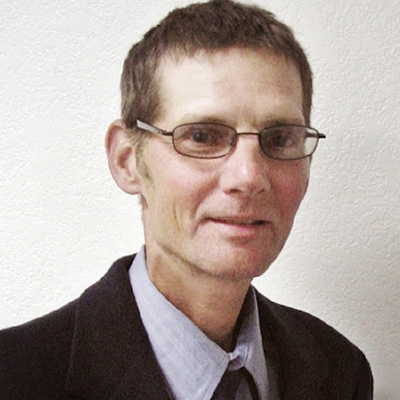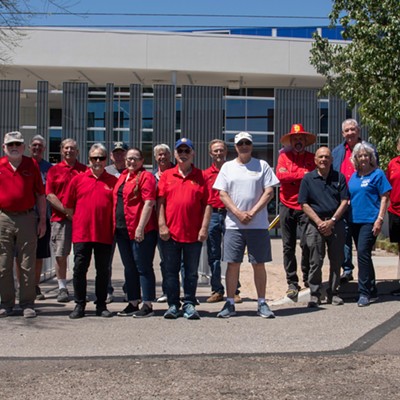But some of the biggest critics of the federal drug task force that gave itself more than $200,000 in raises knew the raises were coming, and knew the task force was moving out of Pima County--because those critics sat on the panel that recommended the moves, records from those meetings show, even if those records are poorly kept and carefully worded.
| Salary Comparisons | |||
|---|---|---|---|
| HIDTA Member | Old salary* | New salary, not incl. benefits | New salary, incl. benefits (i.e., cash stipends for a car and cell phone) |
| Raymond Vinsik | $111,382 | $113,482 | $164,025 |
| James Stone | $75,269 | $81,638 | $119,683 |
| James Lukash | $96,098 | $96,474 | $140,341 |
| Betty Cohen | $54,118 | $81,638 | $119,683 |
| Michael Holmes | $55,707 | $81,638 | $119,683 |
| Sources: Chuck Blanchard; Pima County finance director Tom Burke, in a September 2005 letter to County Administrator Chuck Huckelberry. | |||
| *Old salary does not include benefits. | |||
But others say it's an emblematic problem of a federal task force operating with a lot of money and little oversight. Tax dollars have also been mismanaged, with thousands of HIDTA dollars left floating in Santa Cruz County while an investigation centers in Pima County.
Using federal funds, HIDTA basically coordinates drug-enforcement efforts by all levels of law enforcement. Five members serve as the Arizona HIDTA's administration, and an executive committee oversees those five people. Last year, HIDTA infused more than $10 million of federal funds into narcotics seizures and investigations in Arizona. Pima County was the fiscal manager for the Arizona task force and was responsible for disseminating the HIDTA funds.
In September, Pima County pulled out as the fiscal manager, telling the HIDTA's executive committee that the five members--Raymond Vinsik, James Stone, James Lukash, Betty Cohen and Michael Holmes--"chose to leave their employment with Pima County under unusual circumstances which we believe to be inappropriate for several reasons," wrote County Administrator Chuck Huckelberry to Phoenix Police Chief Jack Harris, the chairman of the executive committee.
Huckelberry accused the five members of arranging agreements with Santa Cruz County "at substantially higher costs," which is true, "without the knowledge of Sheriff (Clarence) Dupnik or County Administration," which is confusing.
In one of his final acts as the HIDTA chair, U.S. Attorney Paul Charlton recommended a vote to find funding sources to increase the Arizona HIDTA's budget so its members could be paid on par with the other administrators in HIDTAs along the U.S. border with Mexico.
Minutes taken by HIDTA directors from a May 2005 meeting state that the executive committee had approved the pay parity--and HIDTA was looking for a way to make the raises happen. But the minutes are simply small summaries of what was discussed at the meetings. Informal and very brief, the summaries of the meetings are vaguely worded at crucial times.
The vague meeting notes raise the question of who was watching an agency with $10 million in its pocket.
At one meeting, the executive committee asks if the pay parity was "still on track." The answer is "it is a done deal"--coming from one of the men who gave themselves a raise in the first place. Another meeting seems overly casual, saying that the next meeting will be held on "Groundhog Day."
Sheriff Dupnik, who serves on the committee, told the Arizona Daily Star in October he was not at the meeting where raises were approved; an attendance sheet from a May meeting shows that he was represented by Captain Shawn Cooper.
Cooper says he was at the meeting, but that "there was no vote on the pay parity issue." He declined further comment because of the ongoing investigation.
Charlton would not reply to questions about the executive committee's approval because of the ongoing investigation, said his spokeswoman, Sandy Raynor.
Sheriff Dupnik did not return five phone calls about the meetings.
Huckelberry says he decided to drop out of HIDTA because the five administrators asked for the raises, then pulled out of Pima County and formed a new agreement with Santa Cruz County.
"When we took the program over and agreed to be the fiscal agent, there came with that a number of individuals who carried out the work. They were carrying out the work as county employees," Huckelberry said.
Even though federal dollars were being used to pay the HIDTA staff, Huckelberry said he could not justify the pay increases, because they resulted in far more pay than other county employees received for the same type of work.
For example, a parks and recreation director wouldn't make what the HIDTA director, Raymond Vinsik, would have earned under the pay raise to $113,482--with an additional $50,543 in benefits--although a parks director would oversee 400 people and a $20 million budget, Huckelberry said.
Instead, he proposed that a job audit be performed, in a December 2004 letter to Charlton. Huckelberry said the job audit was never done and that Charlton never responded to his letter.
In the same letter, Huckelberry stated that one alternative could be that the five administrators become "employees or contractors of the federal, state or another local government."
"Next thing we know is that five of the employees quit or said they were going to retire. And they showed up doing the exact same thing, only contracting now with Santa Cruz County," he said.
The HIDTA administrators pointed out in a written response to Huckelberry that they only moved to Santa Cruz County after Pima County recommended the move. The administrators themselves have declined comment for this story.
A lawyer representing the lead HIDTA director argues that the executive board was simply trying to equalize the pay of the Arizona HIDTA to other HIDTAs.
"And it was really led by Paul Charlton, who kept reminding the board this was something they had approved," said Phoenix attorney Chuck Blanchard.
He says that when it became obvious Pima County would not approve the raises, the HIDTA employees "found a way to get it done," and it should never have been a surprise to Pima County.
"There was someone from the Pima County Sheriff's Office at every meeting (where) this issue was discussed," Blanchard said. "It's mystifying why we're involved in these allegations against people who have been in law enforcement their entire lives."
Blanchard represents Raymond Vinsik, the longest-serving HIDTA employee in the country; he started the HIDTA program in Arizona 15 years ago after working as a high-level official for the U.S. Drug Enforcement Administration.
"I don't know why this happened. My guess is there was a miscommunication where one side agreed and didn't tell the other side. We think maybe there was a complete misunderstanding of how HIDTA was organized," Blanchard said.
Part of the problem is defining whether the administrators are county or federal employees. The administrators say they are federal employees; Huckelberry said they were county employees paid for with a federal grant and are eligible for county benefits like retirement, which some of the now-suspended members signed up for.
As a result of Pima County's complaints, the Arizona Auditor General has opened an investigation into allegations of misconduct against Vinsik and the others. Christina Miller, the auditor general's spokeswoman, confirmed the investigation.
The HIDTA members have ended up out of work. By September, all five resigned from Pima County, heading over to Santa Cruz County, where three months of paychecks were cut for them, said Santa Cruz County manager George Silva.
After the payments were made, the Office of National Drug Control Policy, which oversees all HIDTAs, insisted to Santa Cruz County that those payments be stopped, Silva said. Finally, on Dec. 5, the executive committee voted to suspend the entire staff.
The Arizona Criminal Justice Commission, the grant-administering agency for the state, has taken over as the disseminator of the HIDTA funds while the scandal is sorted out, said agency spokeswoman Mary Marshall.
In the meantime, the director of the Southwest HIDTA, which oversaw the Arizona agency, has taken over in Arizona, she said.
"This whole thing is a mess," says Silva, who feels he was misled by what he calls the "HIDTA 5" and by federal officials who never told him the people he had just signed a $600,000-plus contract with were now being investigated by the state.
"There's no communication here," Silva said, noting that several thousands of taxpayer dollars that belong to HIDTA are still wrapped up in his office, with no one coming to ask for them.
The bigger problem behind the scandal is the demonstrable lack of coordination between the agencies that are supposed to be waging a war on drugs, not each other, experts say.
"HIDTA was brought into being by the Office of National Drug Control Policy. Its primary objective was to bring agencies together in terms of funding. But the fact of the matter is, there's a lot of waste involved," said Mike Vigil, a law-enforcement consultant who headed the Drug Enforcement Administration's international operations office until recently.
HIDTA is supposed to coordinate federal, state and local law enforcement so that toes aren't stepped on, and the locals know what the feds are doing in their cities.
"Sometimes it works to the contrary," he said.












